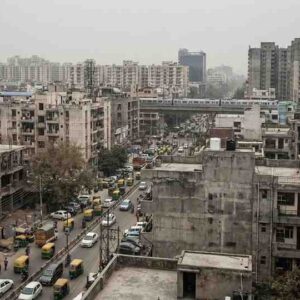Lucknow, 2025— Uttar Pradesh (UP) is currently in the midst of a significant infrastructural overhaul with the hope of spurring economic growth and achieving its ambitious targets. From massive road networks to state-of-the-art energy projects, the investments are substantial. However, the question remains: Are these infrastructure investments alone sufficient to realize the economic ambitions of India’s most populous state?
Overview of Current Infrastructure Projects
- Transportation Networks
- Initiative: UP is expanding its transportation infrastructure with projects like the Purvanchal Expressway, which aims to enhance connectivity between eastern and western regions of the state.
- Progress: This expressway, along with ongoing expansions in metro rail systems across cities like Lucknow and Kanpur, is set to improve logistics and reduce travel time significantly.
- Energy Sector Developments
- Focus: To meet the increasing industrial and residential demand, UP is investing in renewable energy projects, including large-scale solar power plants.
- Current State: Despite these efforts, frequent power outages still pose challenges to business operations and residential satisfaction.
- Digital Infrastructure
- Plan: The government is also pushing for digital infrastructure by increasing internet accessibility and building digital hubs to foster tech startups.
- Outcome: While strides have been made, rural areas still lag behind in digital connectivity, affecting education and business opportunities.
Economic Impact of Infrastructure Developments
- Investment Surge: The state has seen a rise in both domestic and international investments due to improved infrastructure, with notable growth in the manufacturing and IT sectors.
- Job Creation: These projects have directly and indirectly created hundreds of thousands of jobs, contributing to a decrease in unemployment rates.
Challenges to Economic Growth Despite Infrastructure
- Skill Gaps
- Issue: There remains a mismatch between the skills available in the state’s workforce and the skills demanded by new industries.
- Solution: Enhanced vocational training and education reforms are necessary to bridge this gap.
- Regulatory and Bureaucratic Hurdles
- Problem: Investors often face bureaucratic inefficiencies and regulatory complexities that can delay projects.
- Proposed Measures: Streamlining administrative processes and enforcing more transparent regulations are crucial steps forward.
- Sustainability Concerns
- Environmental Impact: The rapid pace of construction has raised concerns about environmental degradation and sustainable development.
- Response: Implementing stricter environmental oversight and integrating green technologies into infrastructure projects are potential remedies.
Expert Opinions and Economic Analysis
- Views from Economists: While infrastructure is a critical component of economic growth, experts argue that it must be complemented by robust educational systems, efficient governance, and vibrant health services to be truly transformative.
- Comparative Analysis: Similar states like Tamil Nadu and Gujarat have shown that while infrastructure attracts businesses, long-term success requires comprehensive development strategies.
Conclusion: Beyond Brick and Mortar
While Uttar Pradesh’s infrastructural investments are pivotal for economic expansion, they are not a panacea. For UP to fully realize its economic ambitions, these investments must be part of a broader, more holistic development strategy that includes educational enhancements, governance reforms, and a commitment to sustainability. Only by addressing these multifaceted needs can UP hope to transform its infrastructure achievements into enduring economic success.













